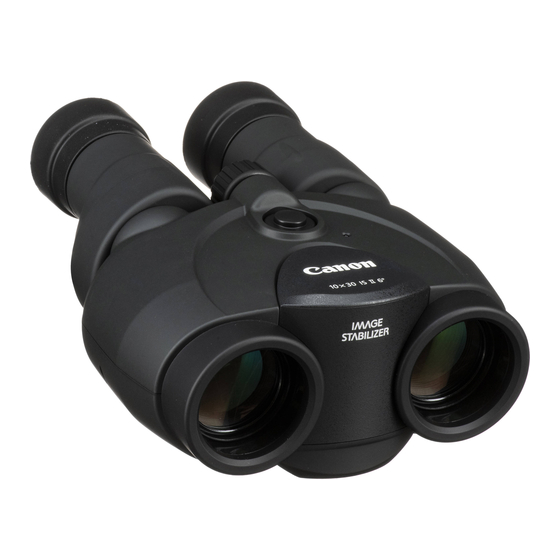Canon 10x30 IS II 매뉴얼 - 페이지 10
{카테고리_이름} Canon 10x30 IS II에 대한 매뉴얼을 온라인으로 검색하거나 PDF를 다운로드하세요. Canon 10x30 IS II 25 페이지. Technology guide
Canon 10x30 IS II에 대해서도 마찬가지입니다: 브로셔 및 사양 (8 페이지), 브로셔 및 사양 (8 페이지), 사용자 설명서 (2 페이지), 사용 설명서 (13 페이지)

Brightness varies from one model of binoculars to another.
Brightness varies with the price and size of the binoculars.
There are many degrees of brightness according to one' s needs.
1) Exit pupil
The bright circle visible when the eyepiece lens array is viewed
about 10 inches away from the eyes is called the exit pupil.
The diameter, measured in millimeters, is called pupil aperture.
The larger the exit pupil, the brighter an image the binoculars
make, and the brightness is expressed by the square of the
aperture of the exit pupil.
Human pupils are about 2-3 mm at most (Fig. 7-a) when bright,
and the binoculars' exit pupils should be about 3 mm. At night,
our pupils dilate to about 7 mm (Fig. 7-b), so it is desirable
to have binoculars with large exit pupils if they will be used
at night.
However, the disadvantage is that such binoculars tend to be
big and heavy.
When bright
When dark
2) Available Aperture of the Objective Lens
The diameter of the objective lens which the light passes
through is called the available aperture of the objective lens.
If the magnification is the same, the larger the available
aperture of objective lens, the brighter image seen through the
binoculars. This is the same effect as when a telephoto lens has
a very large lens diameter. The relationship of the three is:
Aperture of Exit Pupil =
(Fig. 7-a)
(Fig. 7-b)
Available Aperture of Objective Lens
Magnification
The exit pupil
is 3.0 mm
The exit pupil
is 7.0 mm
